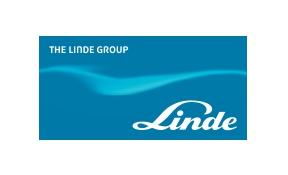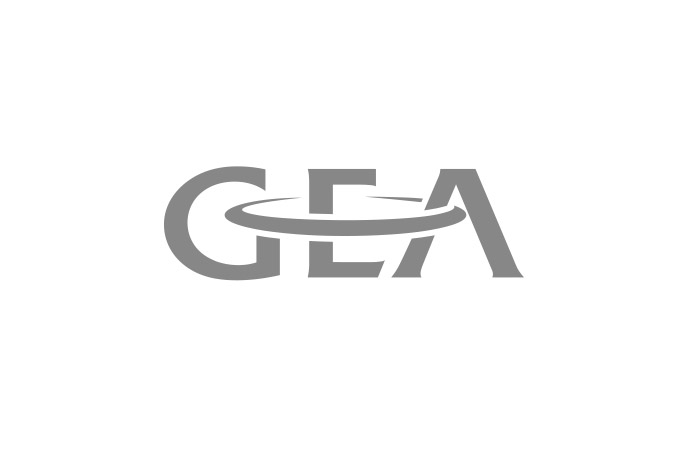In the morning of the 2nd Chillventa day, eurammon organised a lecture on ‘Applications with Natural Refrigerants - country situation and experiences’. hydrocarbons21.com attended the meeting and summarises the conclusions with a special focus on the situation in developing countries. + Presentations available

eurammon, the European initiative for natural refrigerants, was organising a get together of natural refrigerant experts and interested parties to exchange views about the challenges faced by different world regions in the adoption of ammonia, hydrocarbons and carbon dioxide. All four presentations showed best practice examples of successful projects and movements in Brazil, Denmark, Macedonia and the USA, but most importantly called on proponents of natural refrigerants to increase their efforts to speed up the adoption of hydrocarbons.
Tomaz Cleto from Yawatz Engenharia Ltda, focused in his presentation on the situation for hydrocarbons in Brazil. Cleto lamented the strong influence by US-American companies and Chinese producers in the air-conditioning sector, where HFC-based variable refrigerant flow systems have sidelined natural refrigerants, despite their much lower efficiency and high environmental impact. The refrigeration and air-conditioning (RAC) sector in Brazil has always been largely influenced by the appliance manufacturing countries. While industrial refrigeration has been dominated by European companies, the air-conditioning market would now be flooded by Asian companies with systems in need of 3-4 times more refrigerant charge and leakage rates of 10-15%.
Supermarket refrigeration is also dominated by American companies but with growing importance of European players the last 10-15 years. Due to the recent push for green and sustainable business practices and low GWP alternatives in refrigeration, American supermarket chains are gradually opening up to the perspective of deploying natural refrigerants. Small commercial (appliance, vending machines) and domestic refrigeration may be close to a full conversion to hydrocarbons and/or CO2, with the first series of R600a-based appliances having been introduced in 2004-05.
Status of hydrocarbons in Brazil by 2010
HCFC phase-out: An opportunity for hydrocarbons?
Under the Montreal Protocol, developing countries have to gradually phase-out HCFCs. In this scenario, the Ministry of Environment is calling upon all industry sectors to contribute in the development of the Brazilian HCFC phase-out plan to take effect in 2011. The government’s main policy is to promote the use of long term solutions. However, for the moment, the government is not willing to support an HFC phase-down.
“We cannot wait for legislation” to help natural refrigerants enter the Brazilian market, Cleto warned. It would therefore be of crucial importance to draw the attention of industry and end-users to the potential of natural refrigerants and share the established experience with the introduction of hydrocarbons for small systems and domestic refrigeration as well as other natural refrigerant applications in the Brazilian market.
Barriers for natural refrigerants in developing countries
Prof. Risto Ciconkov from the Ss. Cyril & Methodius University, Macedonia, in his insightful presentation gave a comprehensive overview of the effects of the CFC and HCFC phase-out under the Montreal Protocol and barriers to the wider uptake of natural refrigerants.
146 countries, referred to as “Article 5” countries, are currently phasing out HCFCs. The Executive Committee of the Montreal Protocol funded with over US$2.5 billion more than 6,200 projects to phase out ozone depleting substances (ODS). However, in almost all projects these substances were replaced first by HCFC and then HFC technologies, the latter being not ozone depleting but potent greenhouse gases.
Minor exceptions are domestic refrigerators and freezers that to some extend have been converted to natural refrigerants. However, 63% of current world production in this sector still uses HFC-134a, despite hydrocarbon technology being proven to be economically viable since 1994.
The main reason for the switch to HFCs instead of natural refrigerants are the lower upfront costs. This approach, however, is misleading as analysis by life cycle cost or TEWI value clearly show that in the long run natural refrigerants are more cost effective. Another major hurdle for the uptake of natural refrigerants are the contradictory opinions in the developed countries and the general lack of information in the developing countries. Furthermore, the additional cost of generated GHG emissions of HFCs as well as the cost of the refrigerant, based on a high leakage rate in developing countries, are not taken into account.
Also, the international community has so far blindly supported the phase-out of HCFCs without looking at the climate impact of the replacement technologies. In 2007, it was for the first time proposed to take this climate impact into account but until today there is confusion on how to implement this in practice.
Another major obstacle to a circumvention of HFCs in developing countries is the import of second-hand equipment from developed countries that very often uses HFCs if not even still HCFCs.
Some initiatives have been taken to overcome these barriers. GTZ, the German agency for technical cooperation, has published guidelines for the safe use of hydrocarbons in heating and cooling applications and is financing projects that introduce natural refrigerants in developing countries.
However, it needs a concrete strategy and distinct measures to help developing countries to leap frog HFCs in their phase-out of HCFCs and switch directly to natural refrigerants. More demonstration projects of applications running successfully on natural refrigerants are necessary, education and training sessions on the safe handling of natural refrigerants need to be organised in collaboration with national RAC associations and financial support specific to natural refrigerants needs to be offered.
Tomaz Cleto from Yawatz Engenharia Ltda, focused in his presentation on the situation for hydrocarbons in Brazil. Cleto lamented the strong influence by US-American companies and Chinese producers in the air-conditioning sector, where HFC-based variable refrigerant flow systems have sidelined natural refrigerants, despite their much lower efficiency and high environmental impact. The refrigeration and air-conditioning (RAC) sector in Brazil has always been largely influenced by the appliance manufacturing countries. While industrial refrigeration has been dominated by European companies, the air-conditioning market would now be flooded by Asian companies with systems in need of 3-4 times more refrigerant charge and leakage rates of 10-15%.
Supermarket refrigeration is also dominated by American companies but with growing importance of European players the last 10-15 years. Due to the recent push for green and sustainable business practices and low GWP alternatives in refrigeration, American supermarket chains are gradually opening up to the perspective of deploying natural refrigerants. Small commercial (appliance, vending machines) and domestic refrigeration may be close to a full conversion to hydrocarbons and/or CO2, with the first series of R600a-based appliances having been introduced in 2004-05.
Status of hydrocarbons in Brazil by 2010
- 10 Chemical Plants using R-1270 Chillers
- Some Chiller Conversions --> R-22 to HC 22A (R-290)
- 1 R-290 Chiller system for Orange Juice Cooling
- 1 R-290 Chiller system for Distribution Center (LT)
- 2 New projects for Supermarkets with R-290 Chillers and secondary fluids: LT (Tyfoxit)/ MT (Prop. Glycol)/ AC (Water)
- New series of fridges and freezers using R-600a and C-Pentane (foam)
HCFC phase-out: An opportunity for hydrocarbons?
Under the Montreal Protocol, developing countries have to gradually phase-out HCFCs. In this scenario, the Ministry of Environment is calling upon all industry sectors to contribute in the development of the Brazilian HCFC phase-out plan to take effect in 2011. The government’s main policy is to promote the use of long term solutions. However, for the moment, the government is not willing to support an HFC phase-down.
“We cannot wait for legislation” to help natural refrigerants enter the Brazilian market, Cleto warned. It would therefore be of crucial importance to draw the attention of industry and end-users to the potential of natural refrigerants and share the established experience with the introduction of hydrocarbons for small systems and domestic refrigeration as well as other natural refrigerant applications in the Brazilian market.
Barriers for natural refrigerants in developing countries
Prof. Risto Ciconkov from the Ss. Cyril & Methodius University, Macedonia, in his insightful presentation gave a comprehensive overview of the effects of the CFC and HCFC phase-out under the Montreal Protocol and barriers to the wider uptake of natural refrigerants.
146 countries, referred to as “Article 5” countries, are currently phasing out HCFCs. The Executive Committee of the Montreal Protocol funded with over US$2.5 billion more than 6,200 projects to phase out ozone depleting substances (ODS). However, in almost all projects these substances were replaced first by HCFC and then HFC technologies, the latter being not ozone depleting but potent greenhouse gases.
Minor exceptions are domestic refrigerators and freezers that to some extend have been converted to natural refrigerants. However, 63% of current world production in this sector still uses HFC-134a, despite hydrocarbon technology being proven to be economically viable since 1994.
The main reason for the switch to HFCs instead of natural refrigerants are the lower upfront costs. This approach, however, is misleading as analysis by life cycle cost or TEWI value clearly show that in the long run natural refrigerants are more cost effective. Another major hurdle for the uptake of natural refrigerants are the contradictory opinions in the developed countries and the general lack of information in the developing countries. Furthermore, the additional cost of generated GHG emissions of HFCs as well as the cost of the refrigerant, based on a high leakage rate in developing countries, are not taken into account.
Also, the international community has so far blindly supported the phase-out of HCFCs without looking at the climate impact of the replacement technologies. In 2007, it was for the first time proposed to take this climate impact into account but until today there is confusion on how to implement this in practice.
Another major obstacle to a circumvention of HFCs in developing countries is the import of second-hand equipment from developed countries that very often uses HFCs if not even still HCFCs.
Some initiatives have been taken to overcome these barriers. GTZ, the German agency for technical cooperation, has published guidelines for the safe use of hydrocarbons in heating and cooling applications and is financing projects that introduce natural refrigerants in developing countries.
However, it needs a concrete strategy and distinct measures to help developing countries to leap frog HFCs in their phase-out of HCFCs and switch directly to natural refrigerants. More demonstration projects of applications running successfully on natural refrigerants are necessary, education and training sessions on the safe handling of natural refrigerants need to be organised in collaboration with national RAC associations and financial support specific to natural refrigerants needs to be offered.
MORE INFORMATION
Related stories













